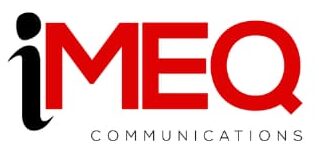
 Social media isn’t merely a channel for brand awareness anymore—it’s also a critical driver of traffic to your website. With millions of users actively using sites like Facebook, Instagram, Twitter, and LinkedIn, brands have an amazing chance to connect with new audiences.
Social media isn’t merely a channel for brand awareness anymore—it’s also a critical driver of traffic to your website. With millions of users actively using sites like Facebook, Instagram, Twitter, and LinkedIn, brands have an amazing chance to connect with new audiences.
But sharing just content is not sufficient; to really tap social media’s potential, it is important to make use of social media analytics for knowing your people, measuring performance, and enhancing strategies. At IMEQ COMMUNICATIONS, applying social media analytics is more than simply keeping an eye on metrics—it is about enhancing how they engage their audience and ultimately get more visits to their website.
1. Understanding Audience Behavior
One of the greatest advantages of social media analytics is gaining insight into your audience on a more profound level. Through analyzing data from tools such as Instagram Insights, Facebook Analytics, and Twitter Analytics, brands can discover more about the interests, demographics, and behaviors of their followers. This information assists in identifying optimal posting times, the nature of content most engaged with by their audience, and how messaging can be adjusted for greater resonance.
For instance, if analysis determines that their audience reacts more when a video is posted during evening hours, then they are able to refine its post timings according to that. One can accordingly create content to what their crowd desires; they will also be able to get more web clicks.
Tip: Monitor your audience’s activity trends to determine when to publish content for the highest engagement levels.
2. Optimizing Content for More Clicks
Social media analysis assistance helps to understand what content is actually working and what isn’t. Click-through rates (CTR), impressions, and engagement rates assist in understanding which kind of posts attract the most traffic to their site. If there are some well-performing blog posts or case studies, it is logical to continue creating more of such content in the future.
For example, if a public relations strategy post is highly engaged, it indicates that their audience cares about the same. By doubling down on high-performing content that their audience loves, brands can reliably drive more traffic to their site.
Tip: Monitor what kinds of posts—whether blogs, infographics, or videos—are generating the most clicks and prioritize producing more of those.
3. Tracking Link Performance
One of the strongest features of social media analysis is being able to monitor the performance of shared links. Companies can utilize tools such as UTM codes or shortened URLs to track what links are most frequently clicked on and through which social channels the most traffic is coming to their site. They can view this to understand exactly how well their content is doing through various channels.
For instance, if they observe that a link posted via Twitter is generating more traffic compared to a link posted via Facebook, then they can realign their approach by spending more time on Twitter for that kind of content. By continuously monitoring and refining link performance, brands can guarantee that they’re getting the maximum traffic potential out of each post.
Tip: Use tools such as UTM parameters or link shortenings to monitor which social media brings the greatest value to your website traffic.
4. Identifying the Best Times to Post
Timing is critical in social media, and social media analytics offer insight into when your audience is most active, knowing the best time to post their material. Knowing when to post, when a brand’s following is most active, can help them promote more visibility, enhance engagement, and drive more visitors to their website.
For instance, if their audience is busiest in the evenings or during lunchtime, you can then schedule posts according to that time. Posting consistently at the best time ensures their content receives greater engagement, with more clicks on their website.
Tip: Examine the activity times of your audience and post during high engagement periods for maximum participation.
5. Monitoring Competitor Activity
Aside from measuring their own performance, brands can utilize social media analytics to follow the activity of their competitors. By observing the type of content that their competition is posting and how their users are interacting, they will be able to spot gaps or opportunities in their own strategy. This enables them to produce better content that will divert traffic away from the competition and to their site.
For instance, if a rival company’s blog post on a PR case study is driving huge traffic, brands can prepare a similar blog post, but with a special spin that will resonate better with their own people. By always looking at their competitors, they are able to be ahead of the game.
Tip: Monitor your competitors’ most popular pieces of content and think about how you can make them better in order to get traffic to your site.
Conclusion
For IMEQ COMMUNICATIONS, social media metrics are more than mere numbers—they are an important instrument for grasping their audience, refining content, and bringing traffic to their site. Through careful monitoring of audience activity, content performance, link traffic, best times to post, and competitor analysis, they can optimize their approach to ensure they are engaging the correct people and producing actual results.
In the end, the aim of social media analytics is to make better, data-informed decisions that translate into more traffic on your website and higher visibility online. By integrating this data into its strategy, IMEQ COMMUNICATIONS can continue to expand its digital presence, draw in more visitors, and accomplish its online marketing objectives.




